Rathfran Abbey
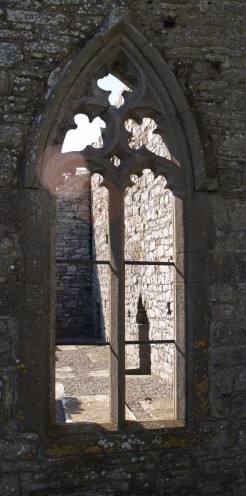
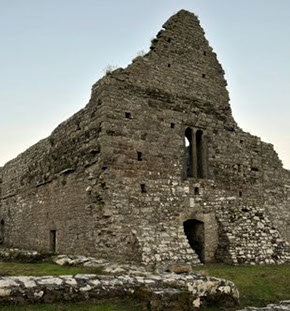

A few miles north of Killala, by the Ballycastle road, on the left bank of the Avonmore river, near to its mouth as it flows into Killala Bay, stand the ruins of the Dominican Abbey or Priory of Rathfran.
“The friary of Rathfran occupies a pleasant and picturesque position, being sheltered towards the north and west by low grassy hills, and standing above a tidal creek, occupying a place which, in early times, must have been an important settlement, judging from the earthen forts and great stone ‘giants graves’ lying around the friary.”
(Journal of the Royal Society of Antiquaries of Ireland, Vol.XXV111, 1898)
Dedicated to the Holy Cross, possibly a crucifix or cruciform sign raised by St. Patrick in the locality, Rathfran was founded in 1274 by the Norman couple William de Burgh, surnamed the “Grey,” and his wife Finola D’Exeter. The site was once a principal seat of the fifth century King Amghalaigh, pronounced Awley, and his Hy Fiachrach descendants (judging from the earthen forts and great stone “giants graves” around the friary), and a place mentioned in history as ‘head of the ancient towns.’ There is a strong extant tradition which maintains that among the first Dominicans to come to Rathfran in 1274, and possibly the first prior, was Stephen D’Exeter, who was the son of the founder of the Dominican Abbey at Straide, the birthplace of the esteemed historical figure, Michael Davitt.
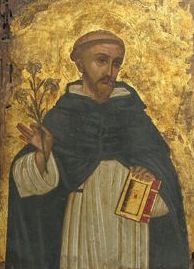 Founded by the Spanish-born Dominic de Guzman, in France, afterwards St. Dominic, ‘Patron Saint of Astronomers,’ and sanctioned by Pope Innocent 111 in 1215, just as it did elsewhere throughout the world, the Dominican Order spread rapidly in Ireland and in 1224 three years after St. Dominick’s death they had foundations in Dublin and Drogheda, county Louth.
Founded by the Spanish-born Dominic de Guzman, in France, afterwards St. Dominic, ‘Patron Saint of Astronomers,’ and sanctioned by Pope Innocent 111 in 1215, just as it did elsewhere throughout the world, the Dominican Order spread rapidly in Ireland and in 1224 three years after St. Dominick’s death they had foundations in Dublin and Drogheda, county Louth.
Labouring under the severest ‘Statutes of the Premonstratensians,’ in other words ‘lives of great austerity,’ the order which includes friars, nuns, active sisters, and lay or secular members, established a house in Waterford in 1226; Athenry, county Galway, in 1241 and Sligo in 1252. Originally the habit worn by the Dominicans friars was the black habit of the ‘Canons Regular’ hence their ancient cognomen ‘The Black Friars.’ They later adopted a white habit with black scapular which they still wear to this day.
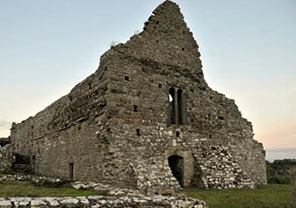 In the Book of Leacan the renowned Irish scholar Giolla Iosa Mór Mac Firbhisigh, in a great topographical poem refers to the abbey as “Raith Branduibh as Bind Cluig”-‘Brandubh’s Fort of the Sweet Bells.’ Sadly, it is officially documented that by 1451 the abbey was without refectory, bell-tower, or bell. According to the antiquarian John O Donovan “the rath or earthen fort of ‘Brandubh,’ a man’s name formerly common in Ireland, meaning ‘raven,’ was probably ‘Bran’s Fort.’ The disyllabic second element of the name can be written Ráth Bhrannaibh. This is reflected in the local pronunciation Rath Frannaigh (as recorded in the Ordnance Survey Letters, 1838) and anglicised as Ra(t)h-Franny, Rathfran.
In the Book of Leacan the renowned Irish scholar Giolla Iosa Mór Mac Firbhisigh, in a great topographical poem refers to the abbey as “Raith Branduibh as Bind Cluig”-‘Brandubh’s Fort of the Sweet Bells.’ Sadly, it is officially documented that by 1451 the abbey was without refectory, bell-tower, or bell. According to the antiquarian John O Donovan “the rath or earthen fort of ‘Brandubh,’ a man’s name formerly common in Ireland, meaning ‘raven,’ was probably ‘Bran’s Fort.’ The disyllabic second element of the name can be written Ráth Bhrannaibh. This is reflected in the local pronunciation Rath Frannaigh (as recorded in the Ordnance Survey Letters, 1838) and anglicised as Ra(t)h-Franny, Rathfran.
_20404x271.jpg) “From Rath-Branduibh whose bells sound sweet:-
“From Rath-Branduibh whose bells sound sweet:-
To Traigh Ceall, [Lacken Strand] a road we travel
The territory of Caoille, whose fame is not xtinct.”
(Caoille: the lands from Rathfran to Kilcummin)
Rath-Branduibh of prosperity
The grand mansion of the arch-chief
Is the dwelling place of the O’Cuinn
Field of yellow-haired clusters.”
(Mac Firbhisigh)
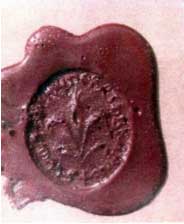
There is a little known local tradition which maintains, with some foundation, that an artefact unearthed adjacent to the abbey at the close of the nineteenth century is in fact the Royal Seal of Rathfran; the Seal is now in the possession of the National Museum, Dublin.
The abbey does not appear to have had a substantial amount of buildings attached, and at the time of the dissolution of the monasteries, it is recorded that there was one small house and a mill adjacent. However, the community owned a large quantity of land which extended westwards, and embraced the modern townlands of Cloonboy and Carrickanass.
_36356x239.jpg) Like most coastal Christian foundations, Rathfran occupies a picturesque position above a tidal river, sheltered to the north and west by low hills, and consists of a church, with a lateral chapel to the south, and two small ranges of domestic buildings to the north. These latter buildings are composed of a vaulted room, attached to the church, and a building of later date (circa 1480-1520) two stories high with some small lights, two double with ogee heads and the third, which is just a slit in the eastern wall. Ogee is a form of curve often used in moulding, shaped somewhat like an S, consisting of two arcs that curve in opposite senses, so that the ends are parallel.
Like most coastal Christian foundations, Rathfran occupies a picturesque position above a tidal river, sheltered to the north and west by low hills, and consists of a church, with a lateral chapel to the south, and two small ranges of domestic buildings to the north. These latter buildings are composed of a vaulted room, attached to the church, and a building of later date (circa 1480-1520) two stories high with some small lights, two double with ogee heads and the third, which is just a slit in the eastern wall. Ogee is a form of curve often used in moulding, shaped somewhat like an S, consisting of two arcs that curve in opposite senses, so that the ends are parallel.
_24285x426.jpg) The church once had a fine east window (the gable-head and shafts are gone) of which only the side piers and their well moulded angle shafts remain: three beautiful buttresses support the corners of this gable, with a similar one situated on the south wall. On Saturday, 5 January, 1839, the elaborate and ornate frame of the east window was shattered during Oíche na Gaoithe Móire -‘the Night of the Big Wind,’ when without warning, hurricane gales of hail wreaked havoc throughout the Ireland. So violent was the wind on this occasion that the roof was blown of St. Patrick’s Roman Catholic Church in Killala. Two vessels, the Earl of Caithness and Wellington, were completely wrecked in the harbour of Killala and as local lore says ‘were it not for the exertions of Mr. Hughes, Mr. Philbin of Killala, Mathew Madden, John Walsh, Anthony Madden and Martin Egan of Killala, their crews would, to a man, have been lost.’ It is also traditionally told that a herring fishing boat with eight men was lost at sea that night and that during the storm all the houses of their respective widows and children were left roofless by the wind. The house and demesne of Killala Castle, at the time the seat of W. J. Burke Esq. also suffered severely. Forty other vessels were shipwrecked along the west coast that night and over three hundred people lost their lives.
The church once had a fine east window (the gable-head and shafts are gone) of which only the side piers and their well moulded angle shafts remain: three beautiful buttresses support the corners of this gable, with a similar one situated on the south wall. On Saturday, 5 January, 1839, the elaborate and ornate frame of the east window was shattered during Oíche na Gaoithe Móire -‘the Night of the Big Wind,’ when without warning, hurricane gales of hail wreaked havoc throughout the Ireland. So violent was the wind on this occasion that the roof was blown of St. Patrick’s Roman Catholic Church in Killala. Two vessels, the Earl of Caithness and Wellington, were completely wrecked in the harbour of Killala and as local lore says ‘were it not for the exertions of Mr. Hughes, Mr. Philbin of Killala, Mathew Madden, John Walsh, Anthony Madden and Martin Egan of Killala, their crews would, to a man, have been lost.’ It is also traditionally told that a herring fishing boat with eight men was lost at sea that night and that during the storm all the houses of their respective widows and children were left roofless by the wind. The house and demesne of Killala Castle, at the time the seat of W. J. Burke Esq. also suffered severely. Forty other vessels were shipwrecked along the west coast that night and over three hundred people lost their lives.
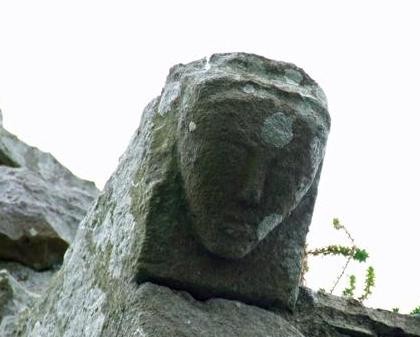 Now bear with the narrative while it makes a quick digression to connect with some of the local folklore pertaining to the aforementioned hurricane. It is well known that in those long ago days there were individuals to be found in almost every community who practiced vernacular weather forecasting (albeit with a degree of success). This they did by using happenings such as the lunar cycle, the appearance and impression of the sky and sea, the wind direction, and the behaviour of wildlife in general, to name just some, while not forgetting their own intuition. The concept of meteorology as we know it today was alien to the vast majority of those who experienced the Big Wind, and as not one of the amateur weather forecasters managed to predict the terrible event, the ordinary people sought their explanations elsewhere.
Now bear with the narrative while it makes a quick digression to connect with some of the local folklore pertaining to the aforementioned hurricane. It is well known that in those long ago days there were individuals to be found in almost every community who practiced vernacular weather forecasting (albeit with a degree of success). This they did by using happenings such as the lunar cycle, the appearance and impression of the sky and sea, the wind direction, and the behaviour of wildlife in general, to name just some, while not forgetting their own intuition. The concept of meteorology as we know it today was alien to the vast majority of those who experienced the Big Wind, and as not one of the amateur weather forecasters managed to predict the terrible event, the ordinary people sought their explanations elsewhere.
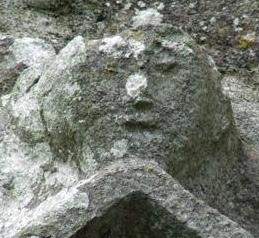 The superstitious, which at the time counted among its ranks the vast majority of the peasantry, and quite a number of the upper classes as well, were very quick to attribute the storm to the ‘doins of the fairies.’ In the traditional Catholic Calendar of the time, the 5 January was designated the Feast of St. Ceara, when, it was traditionally believed, the fairies held a night of great and unrivalled revelry. Accordingly, many believed that the fairies caused such ructions that night that it resulted in the eruption of a mighty storm. Others however, were of the opinion that on that night in question, the fairies of Ireland, sensing some oncoming malevolence held a gathering, after which all but a few of them hurriedly left the country, never to return, it is said, and the force of their swift departure caused the wind to rise to such an extent.
The superstitious, which at the time counted among its ranks the vast majority of the peasantry, and quite a number of the upper classes as well, were very quick to attribute the storm to the ‘doins of the fairies.’ In the traditional Catholic Calendar of the time, the 5 January was designated the Feast of St. Ceara, when, it was traditionally believed, the fairies held a night of great and unrivalled revelry. Accordingly, many believed that the fairies caused such ructions that night that it resulted in the eruption of a mighty storm. Others however, were of the opinion that on that night in question, the fairies of Ireland, sensing some oncoming malevolence held a gathering, after which all but a few of them hurriedly left the country, never to return, it is said, and the force of their swift departure caused the wind to rise to such an extent.
Furthermore, the devout, noting that the storm occurred on 6 January - the Christian Feast of Epiphany, Little or Women’s Christmas, the day Jesus Christ made his being known to the world - saw it as of Divine origin. All the more so since many Roman Catholics in the Ireland of those times held the belief that the 7 January would be the Day of Judgement. But it was not only the Catholic population who held the belief of the storm having its origins in Divine fury, and the “Wrath of God” was a popular cause cited by many newspaper correspondents of the day-of all persuasions.
Freemasonry, traditionally perceived by Irish Catholics as associated with demonic practice, was considered to be another possible cause of the tempest, and it is told that many were of the opinion that the Freemasons had brought up the ‘Divil from Hell’ _28-crop-u8208.jpg) and in the aftermath were unable to send him back.
and in the aftermath were unable to send him back.
Oiche Na Gaoithe Moire,
Na De1readh An Tsaoil
Ar oiche ceann an da la dheag
ISciilh cuimhnc grinn go h-dag.
Is iomai mflte d'eag
1 mbaile, muir's tfr.
Oiche gaoithe m6ire.
Oiche stoirme's d6ite.
A ddan | ? | dfltc. crainnte a' str6iceadh.
Agus obair ag na saoir.
The Night Of The Big Wind.
or The End Of The World
The night of Epiphany
Will be clearly remembered for ever.
Many thousands perished
At home, at sea and abroad.
It was a night of big wind.
A night of storm and burning.
That caused floods. tore trees to shreds.
And made work for craftsmen.
(Collected by Ciaran MacMathuna Eamon MacAoidh, Dooega, Achill)
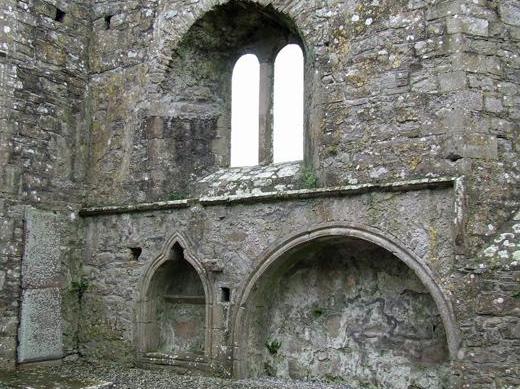 Originally the south windows of Rathfran were of considerable height and had double lights with plain pointed heads. In the first, a lower two-light window with circular heads has been inserted, the second is built up, while the third had its original heads removed and utilised for the lower light-the upper part being closed. Three others appear in the wall but are also built up. The other features of this wall are a trefoil-headed piscine with two shelves and two basins, the arch of which is well moulded, and close by is a semi-circular sedile (maybe a tomb recess) with similar mouldings beneath a projecting cornice and thrusts under the sill of the second window. Close by the plain door leading to the side chapel, a strange little piscine consisting of a sill and cinquefoil head plainly chamfered, with one shelf may be seen. The north wall has two plain doors and two fine trefoil-headed recesses near the altar. One contains a slab, curved with a fine cross and a time-worn inscription in raised letters-it is maintained that these are of the same period as the piscine and recess in the south wall. In the centre of the church is another well decorated tombstone with six lions passant, and there is an unsupported extant theory which claims that these are the arms of O’Brien, because at one time Rathfran was granted to the Earl of Thomond.
Originally the south windows of Rathfran were of considerable height and had double lights with plain pointed heads. In the first, a lower two-light window with circular heads has been inserted, the second is built up, while the third had its original heads removed and utilised for the lower light-the upper part being closed. Three others appear in the wall but are also built up. The other features of this wall are a trefoil-headed piscine with two shelves and two basins, the arch of which is well moulded, and close by is a semi-circular sedile (maybe a tomb recess) with similar mouldings beneath a projecting cornice and thrusts under the sill of the second window. Close by the plain door leading to the side chapel, a strange little piscine consisting of a sill and cinquefoil head plainly chamfered, with one shelf may be seen. The north wall has two plain doors and two fine trefoil-headed recesses near the altar. One contains a slab, curved with a fine cross and a time-worn inscription in raised letters-it is maintained that these are of the same period as the piscine and recess in the south wall. In the centre of the church is another well decorated tombstone with six lions passant, and there is an unsupported extant theory which claims that these are the arms of O’Brien, because at one time Rathfran was granted to the Earl of Thomond.
 With two round-headed lights, the west window is of later date. Above the window a carving of the crucifixion of Jesus dressed in a long garment may be seen, in addition to another carving outside, worthy of mention. And while the side chapel calls for little notice, it does have an east window decorated Gothic, in the lights of which a wall with somewhat long recesses has been constructed. High on the wall between the building and the church there are three closed windows apparent.
With two round-headed lights, the west window is of later date. Above the window a carving of the crucifixion of Jesus dressed in a long garment may be seen, in addition to another carving outside, worthy of mention. And while the side chapel calls for little notice, it does have an east window decorated Gothic, in the lights of which a wall with somewhat long recesses has been constructed. High on the wall between the building and the church there are three closed windows apparent.
_30232x334.jpg)
_32224x334.jpg) In the 1970s much work was carried out on the church ruins by the then Board of Works and the two grave-slabs which are now situated either side of the high-altar, were removed from their original sites in the alcoves at the Gospel side of the altar. This was done in order to preserve the inscriptions which would have deteriorated more rapidly in their prone and more exposed former position. Standing 6’4” high and 2’ wide at the top, narrowing to 1’6” at the base, the gravestone on the left of the altar, as one faces it, has a large cross and other figures carved on its face along with a Latin inscription down its length. The inscription has been deciphered as possibly reading:- “Joannes O’Munilay (or it could be O’Maille) me fiery fecit 1018. This date may not be correct. The other gravestone stands 6’9” in height and is narrower at the top than at the bottom, 1’ 10” at the top and 2’ 4” at the bottom. While this stone does not bear an inscription it is elaborately carved in interlaced Celtic-style design. In the centre of the church is another well decorated tombstone with six lions passant, and there is an unsupported theory that these may in fact be the arms of O’Brien, because at one time Rathfran was granted to the Earl of Thomond.
In the 1970s much work was carried out on the church ruins by the then Board of Works and the two grave-slabs which are now situated either side of the high-altar, were removed from their original sites in the alcoves at the Gospel side of the altar. This was done in order to preserve the inscriptions which would have deteriorated more rapidly in their prone and more exposed former position. Standing 6’4” high and 2’ wide at the top, narrowing to 1’6” at the base, the gravestone on the left of the altar, as one faces it, has a large cross and other figures carved on its face along with a Latin inscription down its length. The inscription has been deciphered as possibly reading:- “Joannes O’Munilay (or it could be O’Maille) me fiery fecit 1018. This date may not be correct. The other gravestone stands 6’9” in height and is narrower at the top than at the bottom, 1’ 10” at the top and 2’ 4” at the bottom. While this stone does not bear an inscription it is elaborately carved in interlaced Celtic-style design. In the centre of the church is another well decorated tombstone with six lions passant, and there is an unsupported theory that these may in fact be the arms of O’Brien, because at one time Rathfran was granted to the Earl of Thomond.
In 1577 this abbey, with its lands, was leased to Thomas D’Exter/Exeter. Later, in 1605, the land was leased to Donat, Earl of Thomond, and later to William Knight. Afterwards, the land seems to have fallen into the hands of the Knoxes of nearby Castle Rea/Castlereagh, before they came into possession of Sir Roger Palmer.
De Burgho, the historian of the Dominicans, informs us that, after the expulsion of the community from Rathfran, some of the friars settled in the neighbourhood, ‘keeping an eye on their ancient home.’ He also tells us that he visited the place in 1756, and found five friars living in a thatched cottage at Mullaghnacroise, about a quarter of a mile from the abbey. The cottage was colloquially known as “Fál a’tSagairt”-‘the Friar’s Hedge/Garden,’ and the last of the Dominican friars of Rathfran, the Rev. Denis Meagher, died there sometime between 1785 and 1789. Local tradition has it that a chalice belonging to the abbey was for many years kept at Carrowkeel, close by Nephin mountain, the edifice which dominates the skyline to the south.
There is a local folk tradition which tells that the building stones for Summerhill House, now ruined and visible nearby, were taken from the ruins of the Rathfran cloisters, and it is further claimed that at one time, ‘before the hands of many raised it to the ground,’ it is said, numerous bee-hive cells were located in the vicinity of the abbey, on the bank near the river. Unfortunately, it is believed that these unique dwellings, along with some of the more ancient headstones and graveslabs were removed and broken up by successive landlords and used to repair boundary walls
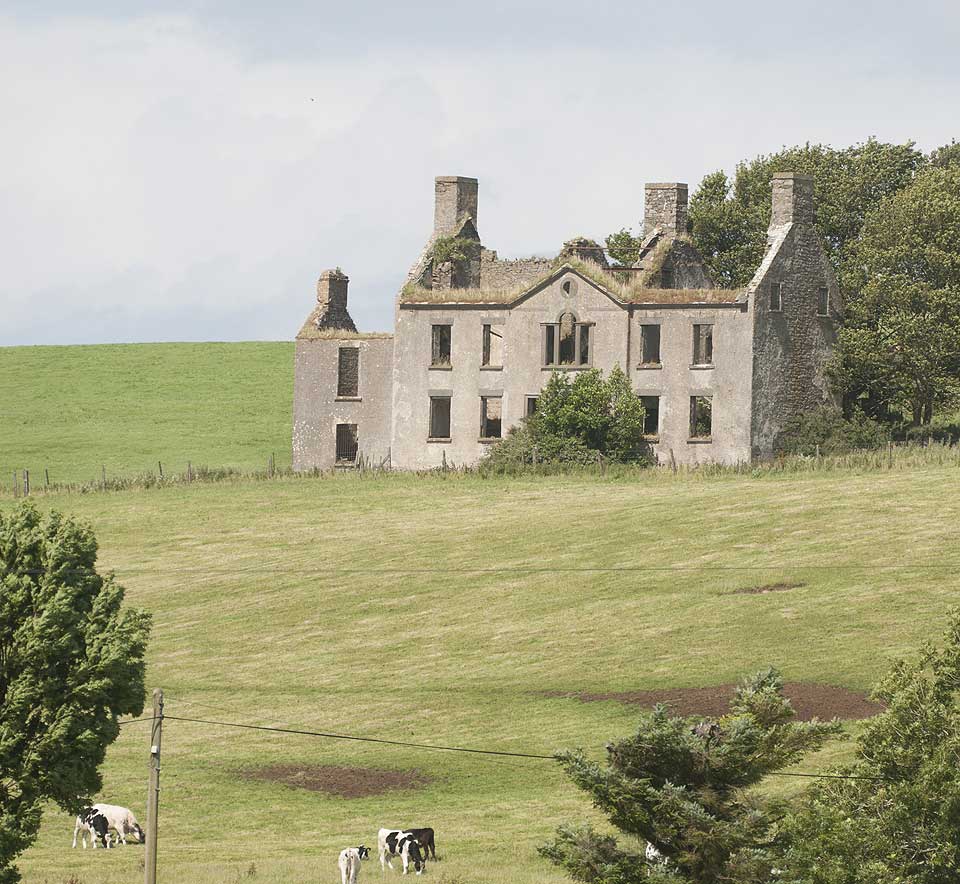
View these photos in a gallery


_30.jpg)




_2.jpg)
_20.jpg)
_22.jpg)
_23.jpg)
_24.jpg)
_28.jpg)
_32.jpg)
_34.jpg)
_36.jpg)
_40.jpg)










_30-crop-u8082.jpg)




_284x55.jpg)
_2083x55.jpg)
_2283x55.jpg)
_23-crop-u12672.jpg)
_24-crop-u12681.jpg)
_28-crop-u12690.jpg)
_30-crop-u12699.jpg)
_32-crop-u12708.jpg)
_3480x56.jpg)
_3683x55.jpg)
_4083x55.jpg)















